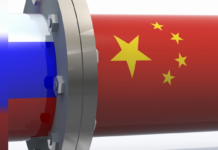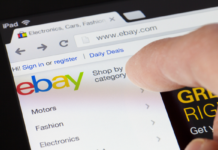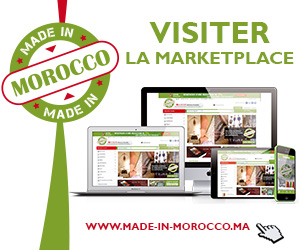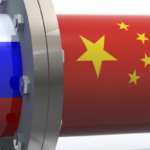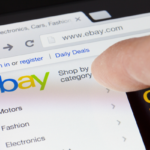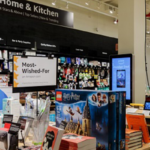Among the myriad of tactics that e-commerce businesses can use to pump up sales, preorders might be the most overlooked strategy. Yet preorder sales are a highly effective way to generate early buzz to gin up demand for new products.
A “preorder” by definition is the sale of a product that is not immediately available to the consumer but will be sometime soon. The product may still be in the development phase. It may already be manufactured and packaged for sale but not yet available in stores.
Just as likely, the retailer is simply holding back to create a sense of excitement and scarcity around an upcoming product. It’s a tried-and-true tactic used by brands in various verticals, including automotive (Tesla), electronics (Apple and Samsung), and gaming (everyone from Nintendo to Sega).
Here’s how e-commerce companies can take advantage of preorders to boost sales.
1. Make It a Tentpole Event
Companies typically tap into preorder marketing strategies to support the release of a major product. You wouldn’t want to spend months of effort ahead of a launch, or during one, to unveil a small accessory to one of your big product categories.
What you’re trying to do is create anticipation and desire for this new product among your followers (as well as influencers and press) and compel customers to jump on preorders the minute they’re available online. Ideally, you’ll apply this strategy to launching one of your flagship products.
Apple uses this tactic to great effect. Ahead of every major launch, Apple carefully doles out juicy snippets of information about a product, whether it’s the latest iPhone, iPad or MacBook. Then it teases journalists and VIPs with media invitations that hint at something cool happening.
For example, to tee up the iPhone 7’s new and improved camera, the press invitation contained an out-of-focus camera background. The event itself is a media circus with major product announcements.
The result of building huge hype can be over-the-top demand, as evidenced by the iPhone X, which sold out during presales in just 10 minutes.
Of course, most online businesses don’t garner Apple-level attention. Still, you can replicate Apple’s hype-building tactics on a smaller scale by sending printed announcements rather than emails or unveiling your newest product in an offline event.
Make it a party. Bring in your CEO or founder. Invite influential press, bloggers and VIP customers to participate in the launch. Only make a limited number of presales available to buy on day one to create the illusion of scarcity and exclusivity.
The point is, there are many ways to emulate Apple’s strategy without breaking the bank or reaching for unfeasible and lofty goals. Just take the same concepts and scale them down appropriately for your company’s needs.
2. Market Your Products Months Ahead
The most critical period for a successful preorder marketing campaign isn’t after your product becomes available on presale. It’s not even the launch day itself.
In reality, the months leading up to your preorder period are what can make or break your launch campaign. What e-commerce brands do before they launch a new product will matter more to overall sales than almost anything post-launch.
Brands must market far in advance of preorder start dates; six months of lead time is a good rule of thumb for most campaigns. You’ll need to reach out to influencers and press to start educating them about the new product.
You need to let existing customers know something exciting is happening and constantly update them about the process (manufacturing details, shipping times, sneak peaks, behind-the-scenes looks, etc.). Consistent email marketing is also critical to building suspense with existing customers.
Before the product’s preorder page is live, you also can build awareness and interest by creating content to distribute via newsletters, social media, and blogs (owned and not owned).
For example, well-known media strategist and author Ryan Holiday sold 30,000 copies of his book, The Obstacle Is the Way: The Timeless Art of Turning Trials into Triumph, in just six weeks.
He leaned heavily on content marketing, including guest posting and podcasts, and also offered exclusive digital downloads with any preorders of his book.
Done right, paid media also can be very effective at generating preorders. Glowforge introduced a 3D laser printer into the market by leveraging Facebook and Google ads, raising US$28 million in preorders in 30 days. Glowforge’s successful marketing mix included look-alike audiences on Facebook, remarketing ads, and a product video that performed extremely well.
3. Create Irresistible Bundles
Crucial to preorder marketing strategies is giving customers the sense that they’re joining an exclusive club. This often can be achieved by offering a bonus that regular buyers won’t be able to get, such as a premium product upgrade, free shipping, or allowing VIP customers to place their preorder ahead of everyone else.
Gaming brands in particular have elevated the presale marketing strategy into an art form, and have trained their passionate fan bases to jump on preorder bundles with every big release. These bundles often include one-of-a-kind collector’s items, digital bonuses, or even access to a private in-person event.
Bundling in gaming has the effect of spurring preorders, suggests a research study conducted by Vineet Kumar, a professor at Yale School of Management, and Timothy Derdenger, a business professor at Carnegie Mellon.
“Bundling also had the unanticipated effect of goading some consumers into making a purchase earlier than they otherwise would have,” Kumar and Derdenger noted.
“In particular, consumers who don’t place a high value on the console or specific games, who might otherwise wait for the hardware to drop in price, jump at the opportunity for a bundled discount that provides both a cheaper console and earlier access to the software,” the researchers found. “This shift translates into a longer potential timeline for game purchases, and therefore more total game purchases.”
Of course, bundling works in other markets as well. For instance, Samsung offered a free Samsung Gear 360 camera or a charging pad bundled with allpreorders of its Galaxy Note 8 smartphone.
LEGO put together 12 different preorder bundles for its expanded Harry Potter collection.
Even Dave Matthews Band created merchandise bundles that included special t-shirts and blankets with preorders of its latest album release.
4. Prepare Your Online Store for the Traffic Surge
If you’ve put in the marketing legwork ahead of your presale campaign, you can expect a big spike in site traffic on the first day that preorders are available. This might seem like a great problem to have, but the last thing you need is for your online store to go down in the middle of launching a new product.
In the best of circumstances, your marketing efforts will result in abnormally high website traffic, which is why your e-commerce infrastructure should be prepared to handle an extreme volume of traffic and orders on day one of your launch campaign and in the following days and weeks.
Properly done, your preorder marketing strategy should pay off dividends long after launch day because you’ve spent the time and effort to prime the pump and create demand leading up to the big day.
The key takeaway is that to make your preorder strategy successful, you need to be prepared to put in months — not weeks — of effort. It is a combination of all of the planning, outreach and consistent marketing that lays the foundation for achieving a surge in presales.
While many e-commerce companies might seem to launch a product with “overnight success,” what might not be so evident is the long tail of strategizing that went into maximizing its preorder potential.




